- CANADIAN PALE
- A term used when the central stripe in a vertical triband has
internal proportions of 1-2-1 as in the Canadian national flag – but see
the notes
below and unequal triband
(also proportions 2),
pale,
triband and
tricolour).
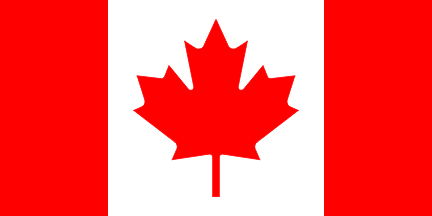
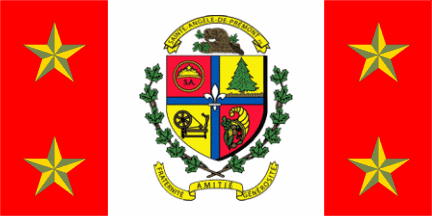
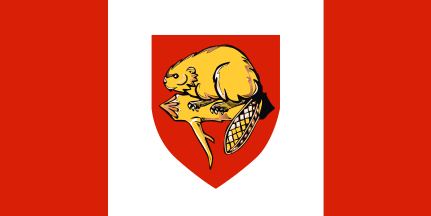
National Flag of Canada;
Flag of Sainte-Angèle-de-Prémont, Canada;
Flag of Brantford, Canada
Notes
a) It is
strongly suggested that this Dictionary's entry on pale and/or
a suitable glossary or heraldic dictionary be consulted before using this term, and that if used
at all it should apply only to Canadian Flags.
b) This term refers solely to a flag’s internal proportions rather than to
the colours used, and that that Canadian sub-national flags can show a
considerable variation on those colours.
- CANTABRIAN LABARUM
- The flag of the Cantabrian independence movement showing a wheel-like emblem that is
considered symbolic of the ancient Cantabrians of Northern Spain – see
labarum 1).
![[Cantabrian Lebarum]](../images/v/vx-es}s.gif)
The Cantabrian Labarum
- CANTABRARII
- Bearers of the cantabrum.
- CANTABRUM
- An ancient Roman cavalry standard of uncertain configuration – but see note below.
Please note – not to be confused with a cantabrian labarum, although, this is believed (by
some sources) to be a later interpretation of the ancient design –
(see cantabrian labarum).
- CANTING
- A heraldic term used when the design on a shield or any quartering thereof,
on a banner of arms or a flag
forms a pun on the name or attributes of the entity or person represented –
allusive or punning arms or armes parlantes (see
also armorial bearings).
![[Greifensee, Switzerland - canting]](../images/v/vx-no-07-20.gif)
![[Brodski Stupnick flag - canting]](../images/v/vx-hr-sb-bs.gif)
![[canting]](../images/v/vx-ch-tg067.gif)
Flag of Stokke, Norway;
Flag of Brodski Stupnik, Croatia;
Flag of Bischofszell, Switzerland
Notes
a) Stup is Croatian for column.
b) Norwegian for stick is Stokke.
c) Bischof means bishop in German.
- CANTON
- 1) Commonly, all or part of the upper hoist – or first – quarter of a flag’s
field that has no vertical divisions and/or is otherwise undivided – the canton (see also
Appendix I,
inner canton and
quarter 1)).
- 2) A rectangular (or square) area of colour or design different from the field
in the above position, which may occupy exactly one quarter of the flag or a larger
or smaller area (see also canton flag below,
covering,
quarter 1) and
Union).
- 3) One of the four quarters of a flag, divided horizontally and vertically into:
(1) the upper hoist or upper hoist canton,
(2) the upper fly or upper fly canton,
(3) the lower hoist or lower hoist canton and
(4) the lower fly or lower fly canton
corresponding to quarters one to four of a shield divided quarterly
(see also Appendix I,
grand quarter,
quarter 2),
quarterly,
hoist and
fly).
- 4) In heraldry as definition 2) except (although apparently of no fixed size)
heraldic use frequently suggests that a canton should occupy one-third of the
chief (see also cantoned 1) and
chief).
![[canton example]](../images/v/vx-nz~civil.gif)
![[canton example]](../images/v/vx-my-kd.gif)
![[canton example]](../images/v/vxt-d656c.gif)
Civil Ensign of New Zealand;
Flag of Kedah, Malaysia;
the four quarters, quarter 1 being the canton
Please note that "canton" is also the title by which the major sub-divisions of several
countries (states, counties etc.) are known (see also cantonal arms
and cantonal flag).
- CANTONAL ARMS (or COAT OF ARMS)
- The arms of a territorial division within a country when that
subdivision is called a canton – e.g., one of those cantons (regions) that
make up the Swiss Confederation, or those of Bosnia-Herzegovina or Costa Rica
– see state arms 3) under
arms
(also cantonal flag).
![[Thurgau arms]](../images/v/vx-ch-tg).gif)
![[Buenos Aires arms]](../images/v/vx-cr-buenosaires).gif)
![[Posavina arms]](../images/v/vx-ba)02.gif)
Arms of Thurgau, Switzerland (Wikimedia);
Arms of Buenos Aires, Costa Rica (Wikimedia);
Arms of Posavina, Bosnia-Herzegovina.
- CANTONAL FLAG (or BANNER)
- The sub-national flag of a territorial division within a country when that subdivision is called a
canton – e.g. one of the cantons which make up the Swiss Confederation, or of Bosnia-Herzegovina,
Ecuador or Costa Rica
(see also cantonal arms and
sub-national flag).
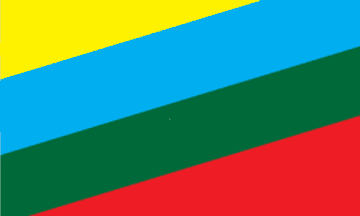
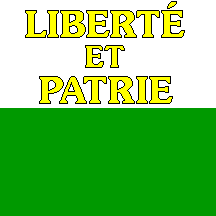
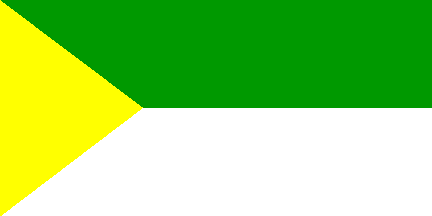
Flag of Buenos Aires, Costa Rica;
Flag of Vaud, Switzerland; Flag of
Carlos Julio Arosemena Tola, Ecuador
- CANTONAL TRIANGLE
- The newly introduced term for a right-angled, triangular panel set with
its legs (or catheti) along the hoist and upper edge of a flag as illustrated
below – but see triangular panel 1).
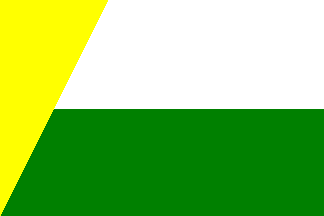
Flag of Imues, Colombia
- CANTONED CROSS
- In heraldry see cross cantonée.
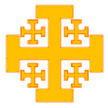
Flag of the Kingdom of Jerusalem c1200 (CS)
- CANTONED (or CANTONÉE)
- 1) See cross cantonée
(also canton 4)).
- 2) Alternative heraldic terms sometimes (incorrectly) used to describe a charge or charges set in the
cantons of a shield that does not carry a cross or saltire
– cantonée (see also saltire).
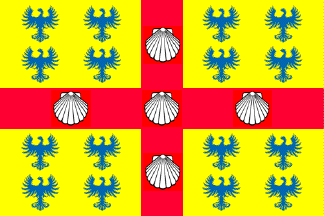
.gif)
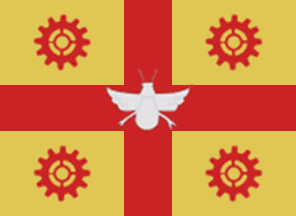
Flag of Précigné, France; Arms of
Figueiró dos Vinhos, Portugal;
Flag of Iracemápolis, Brazil
- CANTON FLAG
- 1) A term used to describe the canton of a flag, or to describe the flag
itself, when its canton consists of another flag, as in for example, those examples illustrated below –
a nationally cantoned flag (see also armorial ensign 2),
British style ensign, canton 2),
canton of St. George,
civil ensign under ‘ensign’
and colonial flag).
- 2) See cantonal flag.
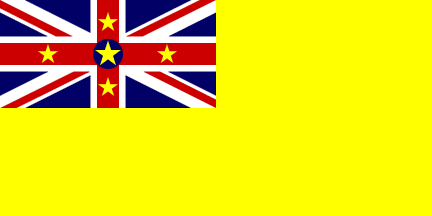
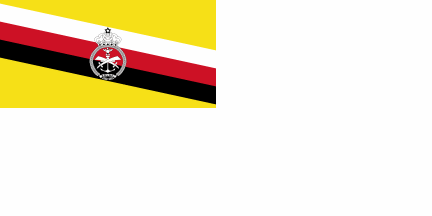
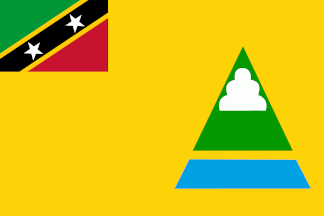
Flag of Niue; War Ensign of Brunei
1990–2010; Flag of the Island of Nevis until 2019
- CANTON OF ST. GEORGE
- The term used when a flag’s canton is formed by the red cross of St George on
its white field – a St George’s canton (see also canton 2),
canton flag, St George’s Cross 2)
and St. George's ensign.
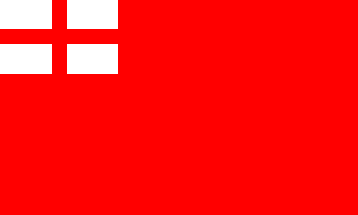
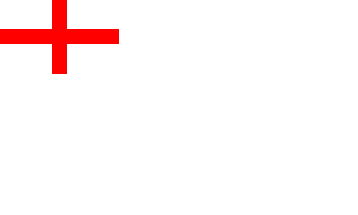
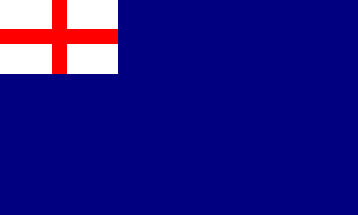
Red Ensign c1625–1707;
White Ensign c1630–1702;
Blue Ensign c1630–1707, England
- CAP BADGE
- See badge 3).
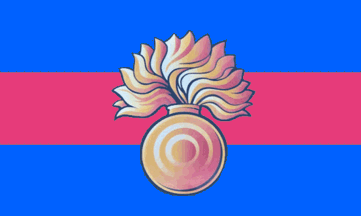
Camp Flag of the Grenadier Guards showing their Cap Badge, UK
- CAP OF LIBERTY
- An ancient symbol in the form of a soft red cap which, as a consequence of having been
adopted by various revolutionary movements during the 18th century, has come to be regarded as a
symbol of resistance against monarchical or imperialist oppression – a liberty, Phrygian or
Scythian cap.
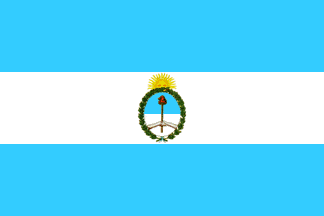
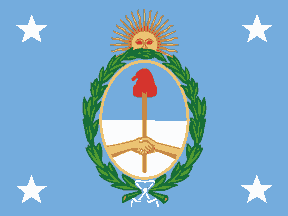
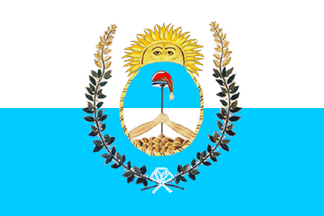
Presidential Transport Flag and
Flag Afloat;
Flag of the Army of the Andes 1817–18, Argentina
- CAPPELINE
- In heraldry see ‘mantling’.
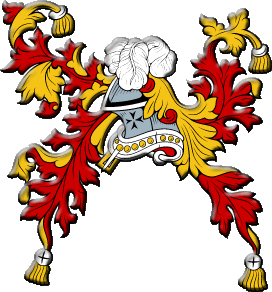
(internationalheraldry.com)
- CAPSULED (or CAPSULES)
- Terms sometimes used in European Continental heraldic blazoning indicate that fruit or berry is
encased or part-encased in another tincture – a term, as far as can be discovered, unknown in English
heraldry – see fructed and garnished.
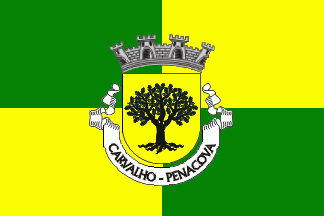
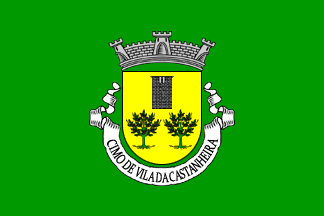
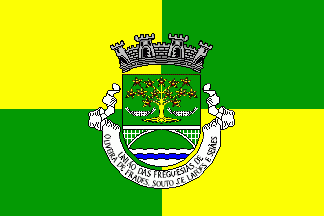
Flag of Carvalho, Portugal;
Flag of Cimo de Vila da Castanheira, Portugal;
Flag of Oliveira de Frades, Souto de Lafões e Sejães, Portugal
- CAPTAIN’S COLOUR (or COLOR)
- See stand of colours 1) and
venn.
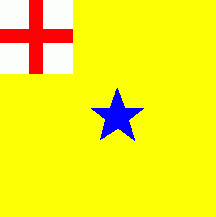
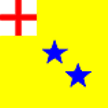
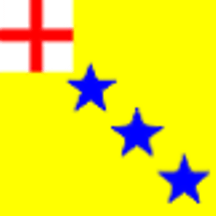
Examples of First – Third Captain’s Colours
in Venn A, English c1641
- CAPTURED FLAG
- See trophy flag.
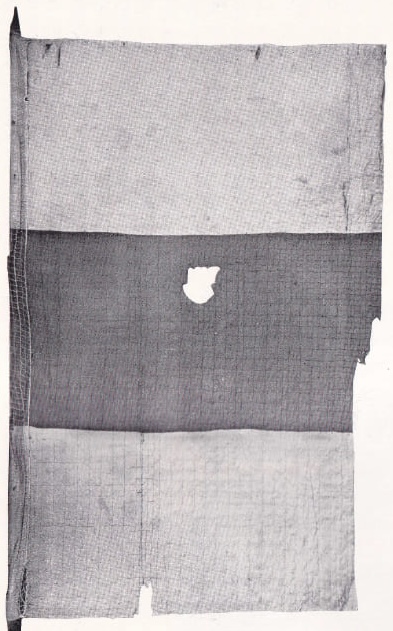
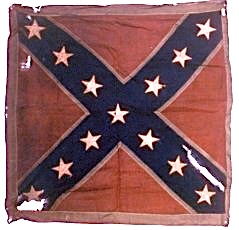
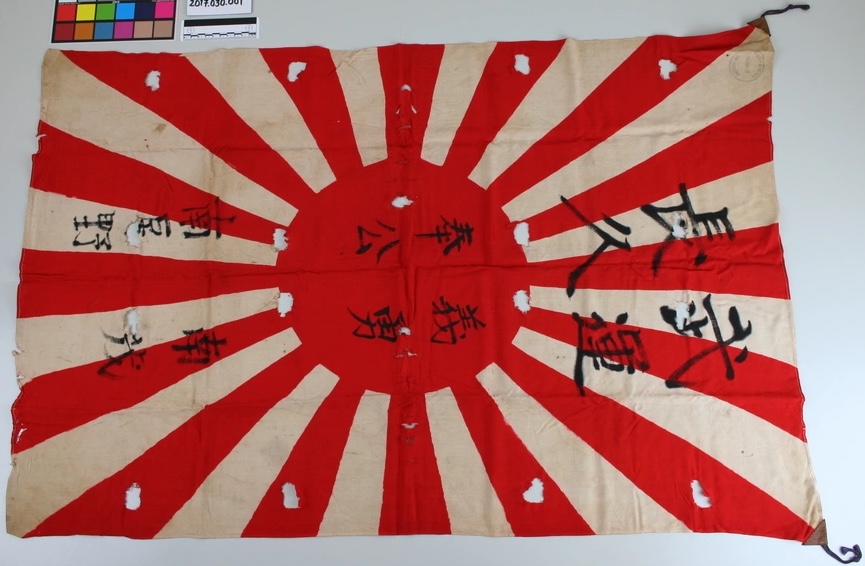
Banner of Zug, captured at Villmergen (CH), 25 July 1712 [b7b42];
CS Flag captured at Blakely, Alabama, 1 April 1865
(civil-war.com);
Japanese Good Luck Flag, captured on Eniwetok (MH), February 1944
(mycg.uscg.mil)



![[Greifensee, Switzerland - canting]](../images/v/vx-no-07-20.gif)
![[Brodski Stupnick flag - canting]](../images/v/vx-hr-sb-bs.gif)
![[canting]](../images/v/vx-ch-tg067.gif)
![[canton example]](../images/v/vx-nz~civil.gif)
![[canton example]](../images/v/vx-my-kd.gif)
![[canton example]](../images/v/vxt-d656c.gif)
![[Thurgau arms]](../images/v/vx-ch-tg).gif)
![[Buenos Aires arms]](../images/v/vx-cr-buenosaires).gif)
![[Posavina arms]](../images/v/vx-ba)02.gif)






.gif)





















![[Cantabrian Lebarum]](../images/v/vx-es}s.gif)
